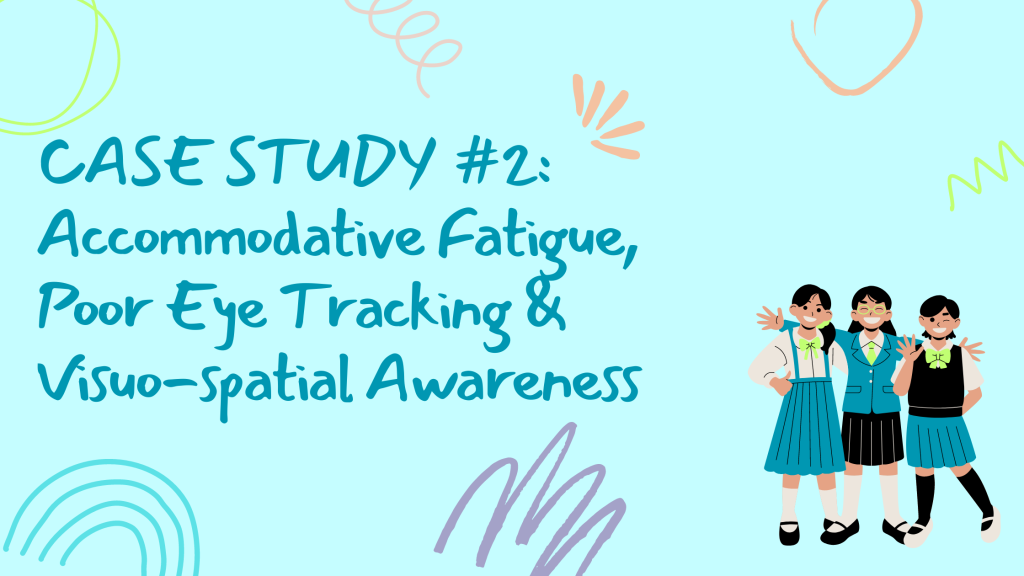Managing a chronic condition such as diabetes is challenging enough, but what if your child also has a vision problem like strabismus? Parents of children with these dual challenges often find themselves feeling overwhelmed. However, with the right information and support, it is possible to navigate these hurdles successfully.
In this blog post, we will explore the relationship between diabetes in children and the occurrence of strabismus, and other eye problems, emphasizing the importance of a comprehensive approach to their care.

Understanding Diabetes
Diabetes is a metabolic disorder characterized by high blood sugar levels over a prolonged period. Type 1 diabetes, usually diagnosed in childhood, occurs when the immune system mistakenly attacks and destroys the insulin-producing cells in the pancreas. Type 2 diabetes is commonly seen in adults but can also affect children, often linked to lifestyle factors such as poor diet and sedentary habits.
The Impact on Vision
Diabetes can take a toll on various parts of the body, including the eyes. High blood sugar levels can cause damage to the tiny blood vessels in the retina, leading to a condition called diabetic retinopathy.
Kids with type 2 diabetes are nearly twice as likely than those with type 1 diabetes to develop diabetic retinopathy within 15 years of their diagnosis, the study found.
Another common vision problem in children with diabetes is glaucoma. This condition occurs when there is increased pressure in the eye, which can cause the optic nerve to become damaged. Glaucoma can cause vision loss and may even lead to blindness if left untreated.
Cataracts are another vision problem that may affect children with diabetes. Cataracts occur when the lens of the eye becomes cloudy. This can cause vision to become blurry or hazy. In some cases, surgery may be necessary to remove cataracts and restore vision.
However, what many parents might not realize is that diabetes could also increase the risk of developing strabismus or eye turns in children.
Understanding Strabismus
Strabismus, commonly known as crossed or wandering eyes, is an eye condition where the eyes do not align correctly. One eye may turn inwards, outwards, upwards, or downwards, while the other eye remains focused on a specific target. Strabismus can be intermittent or constant and is often associated with amblyopia, commonly known as lazy eye. Depth perception, eye-focusing and eye-tracking skills are often compromised with the occurrence of strabismus.
The Connection between Diabetes and Strabismus
While the exact link between diabetes and strabismus is not fully understood, experts believe that the increased blood glucose levels associated with the condition can affect the nerves and muscles controlling eye movement. Additionally, children with diabetes may experience fluctuations in blood sugar levels, leading to temporary vision changes and eye muscle imbalances.

Comprehensive Care for Children
If your child has both diabetes and strabismus, it is essential to work closely with a team of healthcare professionals, including an ophthalmologist, endocrinologist, and pediatrician. By taking a comprehensive approach to their care, you can ensure that both conditions are managed effectively.
Regular Eye Examinations: Schedule regular eye examinations for your child to monitor their eye health and detect any changes early. This is especially important for children with diabetes and strabismus.
Blood Sugar Control: Work with your child’s endocrinologist to establish a stable blood sugar control plan. Consistently monitoring and managing blood glucose levels can help prevent vision-related complications associated with diabetes.
Vision Therapy: If your child’s strabismus is affecting their quality of life, vision therapy may be recommended. Vision therapy involves targeted exercises and activities designed to improve eye coordination and strengthen eye muscles.
Education and Support: Ensure that your child understands both their diabetes and strabismus. Educate them about the importance of medication, regular eye exams, and proper blood sugar control. Seek support from dedicated diabetes and strabismus support groups to connect with other families facing similar challenges.
Managing diabetes and strabismus in children requires a thoughtful and comprehensive approach. By maintaining good blood sugar control, seeking regular eye examinations, and providing the necessary support and education, parents can help their children thrive despite these dual challenges. Remember, early detection and intervention are key, so be proactive in seeking the appropriate care to safeguard your child’s health and well-being.
Student’s Bonus
- Diabetes in both children and adults can cause hyperglycemia myopia if blood sugar levels are not controlled. Studies have found that the secondary myopia is more likely to resolve with successful medication but any accommodative dysfunction that has occurred along the way may also drag down vergence function along with it. Improvement of accommodative and vergence dysfunction spontaneously or with vision therapy is not yet known.
- Diabetes is known to cause neuroparalytic strabismus with pupil-sparing third nerve and sixth nerve paresis being the most and roughly equal types.
- Diabetes may also cause gaze-evoked strabismus if there is an infarct to the medial longitudinal fasiculus. This disease process is called internuclear ophthalmoplegia.












